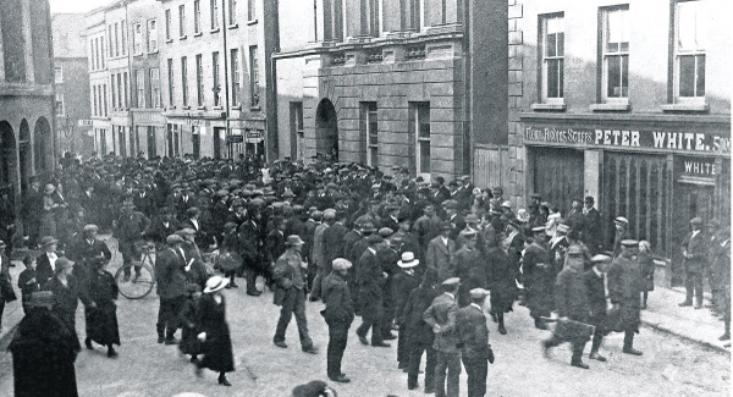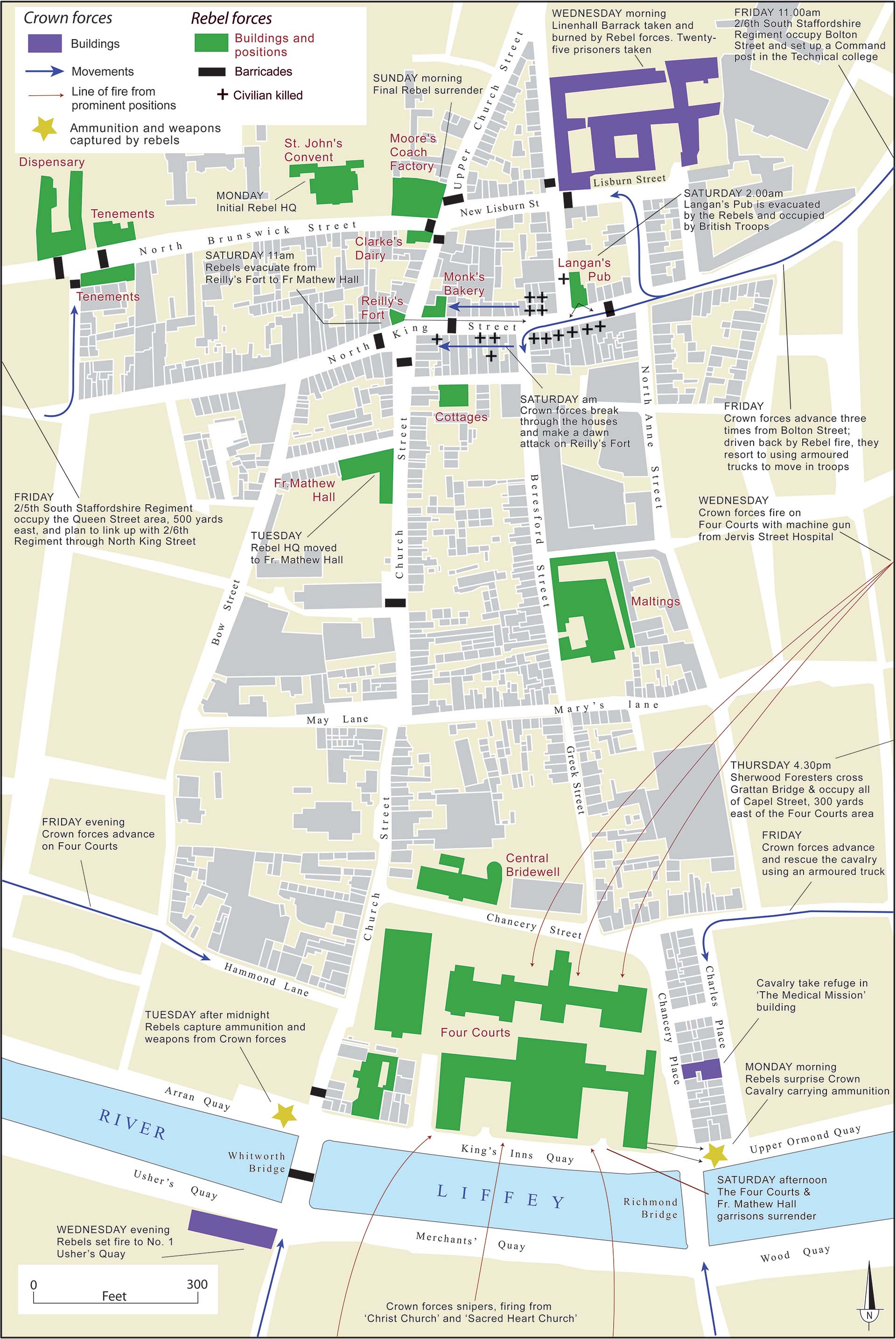- Home
- Collections
- Atlas Resources for Schools
- Cork Fatality Register
- Mapping the Irish Revolution
- Mapping IRA Companies, July 1921-July 1922
- Mapping the Burning of Cork, 11-12 December 1920
- Martial Law, December 1920
- The IRA at War
- The Railway Workers’ Munitions Strike of 1920
- The Victory of Sinn Féin: The 1920 Local Elections
- The War of Words: Propaganda and Moral Force
- The IRA Offensive against the RIC, 1920
- De Valera’s American Tour, 1919-1920
- The British Reprisal Strategy and its Impact
- Cumann na mBan and the War of Independence
- The War Escalates, November 1920
- The War of Independence in Cork and Kerry
- The Story of 1916
- A 1916 Diary
- January 9-15 1916
- January 10-16, 1916
- January 17-23, 1916
- January 24-30, 1916
- February 1-6 1916
- February 7-14, 1916
- February 15-21, 1916
- February 22-27, 1916
- February 28-March 3, 1916
- March 6-13,1916
- March 14-20, 1916
- March 21-27 1916
- April 3-9, 1916
- April 10-16, 1916
- April 17-21,1916
- May 22-28 1916
- May 29-June 4 1916
- June 12-18 1916
- June 19-25 1916
- June 26-July 2 1916
- July 3-9 1916
- July 11-16 1916
- July 17-22 1916
- July 24-30 1916
- July 31- August 7,1916
- August 7-13 1916
- August 15-21 1916
- August 22-29 1916
- August 29-September 5 1916
- September 5-11, 1916
- September 12-18, 1916
- September 19-25, 1916
- September 26-October 2, 1916
- October 3-9, 1916
- October 10-16, 1916
- October 17-23, 1916
- October 24-31, 1916
- November 1-16, 1916
- November 7-13, 1916
- November 14-20, 1916
- November 21-27-1916
- November 28-December 4, 1916
- December 5-11, 1916
- December 12-19, 1916
- December 19-25, 1916
- December 26-January 3, 1916
- Cork's Historic Newspapers
- Feature Articles
- News and Events
- UCC's Civil War Centenary Programme
- Irish Civil War National Conference 15-18 June 2022
- Irish Civil War Fatalities Project
- Research Findings
- Explore the Fatalities Map
- Civil War Fatalities in Dublin
- Civil War Fatalities in Limerick
- Civil War Fatalities in Kerry
- Civil War Fatalities in Clare
- Civil War Fatalities in Cork
- Civil War Fatalities in the Northern Ireland
- Civil War Fatalities in Sligo
- Civil War Fatalities in Donegal
- Civil War Fatalities in Wexford
- Civil War Fatalities in Mayo
- Civil War Fatalities in Tipperary
- Military Archives National Army Fatalities Roll, 1922 – 1923
- Fatalities Index
- About the Project (home)
- The Irish Revolution (Main site)
Easter Week Timeline: Thursday 27 April 1916

Irish Volunteers take over Enniscorthy, Co Wexford, occupying the Athenaeum and hoisting the Republican flag.
Throughout the morning, British shells continued to be fired on Dublin city centre.
James Connolly was wounded in the ankle after going out to inspect rebel positions, and struggled to make it back to headquarters in the GPO on Sackville Street.
In the afternoon, future Dáil Éireann Defence Minister Cathal Brugha was wounded badly at the South Dublin Union garrison which was under the leadership of Éamonn Ceannt. The fighting in the hospital had come down to close-quarter combat between rebels and soldiers. However, the area was largely left by British military forces on Thursday night as they focused efforts on fighting in other parts of the city.
Back in the GPO, a manifesto aimed at lifting spirits of his fellow rebels was dictated by the wounded James Connolly to his aide Winifred Carney. A British army doctor taken prisoner was helping to treat the injured signatory to the Proclamation of the Irish Republic.
With military reinforcements shoring up defences around Trinity College Dublin, communication and movement between rebel garrisons was made all the more difficult. From positions on the campus at the end of Grafton Street, and with sightlines towards Sackville Street, it was impossible for the insurgents to move arms, messages or people to or from the GPO headquarters of Connolly and Pearse.
10pm
On Thursday night, British soldiers also began invading the north inner city where the Volunteers under command of Tom Clarke’s brother-in-law Ned Daly had offered fierce resistance all week. The military effort involved efforts to occupy houses, leading to the shooting and killling of several uninvolved civilians in the North King Street area.
Casualties of the British Army 59th division casualties by Thursday night are: four officers killed and 15 wounded; other ranks – 11 killed, 108 wounded, 101 missing.
The Four Courts: Map & Caption

Heavy fighting erupted in and around the Four Courts, a complex of three large courthouses overlooking the north side of the River Liffey. Additional rebel strongholds established were established along North King Street and North Brunswick Street. The insurgents intended to block potential advances of British troops stationed at Marlborough and Royal Barracks in the city suburbs and to hold open a line of retreat through Phibsborough, north of the city centre, to County Meath, should the rebels decide to evacuate the capital. During the first twenty-four hours of the Rising, the rebels shot up a British cavalry column on Upper Ormonde Quay and captured an ammunition wagon on Arran Quay. However, at the same time, British troops and artillery pressed forward from the north towards Upper Church Street, sealing off Phibsborough from the Four Courts area.
By Wednesday, the rebels remained on the defensive, though they did seize the Bridewell police station and burn Linenhall Barracks on Lisburn Street. On the south side of the Liffey, British troops occupied homes on Usher’s Quay and shot across the river into rebel barricades and the Four Courts buildings. That evening, two insurgents dashed across Whitworth Bridge and set fire to No. 1 Usher’s Quay, driving soldiers from the area.
To the north, rebel outposts on North King Street and North Brunswick Street lay directly in the path of an intended linkup by the South Staffordshire Regiment’s 2/5th Battalion (advancing from the west) and 2/6th Battalion (advancing from the east). This led to fierce fighting all day Friday, as the British in Bolton Street tried to link up with troops in the Queen Street area. Attacks by the South Staffordshire 2/6th battalion were repeatedly repulsed assaulting Reilly’s ‘Fort’ and Langan’s Pub on North King Street. However, the troops used a homemade armoured car to safely carry scores of soldiers into the street, and ultimately forced the rebels to abandon the post that night.
The next morning (Saturday), the insurgents likewise retired from Reilly’s Fort and fell back on Fr. Mathew Hall, isolating their embattled garrisons on North Brunswick Street. Angry over their heavy casualties, members of the South Staffordshires killed fifteen unarmed male civilians living near Langan’s, an episode later known as the ‘King Street Massacre’.
As British troops flooded into the area on Friday, the rebels beat back attempts to force the barricade at North King Street protecting Father Matthew Hall, while insurgents inside the Four Courts buildings exchanged fire with British troops along Hammond Lane. Fighting continued well into Saturday afternoon, and only stopped when Pearse’s surrender order reached the Four Courts garrison at 4 pm. All rebel posts surrendered, except those cut off on North Brunswick Street. They held out until Sunday morning, and were the last of the Dublin garrisons to lay down their arms. [Source: Atlas of the Irish Revolution, (CUP, 2017)]
